|
Way back in the "olden days," before everyone had smart phones, tablets, or even PCs, I was told that I should keep a food diary. So, for a few days, I would write down everything I ate hoping to get some insights into what I was doing that was causing me to gain weight. On paper (literally) it didn't look like I was doing anything horrible. There were two problems. The first was that I wasn't really writing down all the food I was consuming. The second, and more difficult problem for me to overcome was that I just didn't have enough data about the nutritional value of what was going into my mouth. All that changed when I got what, at the time, was a cutting-edge app and had access to the USDA database of foods along with access to "nutrition" information from select companies via their web sites.
I was in the San Diego airport, on my way to San Francisco for work, when I stopped in at the Starbucks and got my usual "morning snack"--a Chocolate Muffin and a grande soy mocha without whipped cream. While I sat in the departure lounge, waiting for my flight, I decided to enter the data from my breakfast and my snack into that new app that I had downloaded. I went through all the foods in my morning smoothie, creating a meal so that I could easily add the smoothie again the next day (yes, like most people, I'm a creature of habit when it comes to breakfast.) Then, I went to enter my Starbucks snack. There wasn't any data in the app for Starbucks, so I used my WiFi access to visit their website. I looked up the nutrition information for the muffin and the soy mocha and I was given a rude awakening. Together, the snack that I finished in fewer than 10 minutes had over 1200 calories! Holy Shiznit! That little snack accounted for almost 2/3 of what I was supposed to eat for the whole day! No wonder I was overweight! From that moment forward, I made the commitment to keep track of everything I ate so that I was sure I'd have the data I needed to keep me losing weight. For the next year, I logged foods eaten and calories burned from exercise. I made certain that I had enough calories remaining before I ate something, sometimes going to the gym or for a run just so I could have a sweet treat at the end of the day. And, guess what...It worked. In that year, I made sure that each and every day I had at least a 900 calorie deficit (from eating less and from working out more) and the results were phenomenal. Of course, times change and technologies move forward. The app that I had been using stopped being updated and I moved to a new platform that wasn't supported. So, I set out to find a replacement. Nothing that I found was quite right or as easy to use as that old app. And so, I stopped logging the food I was eating. At first it was OK. But little by little, I started to gain weight again. It became clear to me that in all of that year that I had been using an app to keep me on the path that I had actually neglected to look at the path itself. I had learned how to count calories, but I hadn't learned how to listen to my body so I could discern actual hunger versus desire for tasty food. In order to get a grip on this area of my life, I decided that I had to take a two-pronged approach. First, I had to go back to counting calories. Second, this time I had to pay attention to what my body was telling me as opposed to what my mind was telling me. The first approach was easy. There are tons of apps on the market for Android, iOS and Windows mobile devices as well as computer and web based programs. Probably the easiest and most useful of those is MyFitnessPal.com which has programs to cover all platforms as well as a website for data entry. Basic functionality is free, and a premium version is available but in my opinion, doesn't really add enough features to be useful for most people. The second approach was a bit more difficult, and this is also where I see my clients struggle at first. Most people who are overweight aren't eating because they're physically hungry. Their bodies aren't saying "I need more nutrients to fuel cellular energy and regeneration." Rather, the food gets consumed due to emotional and mental hunger. The problem is that emotional and mental hunger is never satiated by food. In fact, emotional and mental hunger is usually increased by eating food. The way to quell emotional and mental hunger is by emotional wellness, mental engagement and physical activity. At Proactive Evolution, emotional wellness, mental engagement and what we call "strenuous play" are the center point of our success with achieving physical well being. And really, this is the best diet tracker of the year: By recognizing, tracking and resolving the challenges that create emotional and mental hunger, you'll be able to employ effective strategies to lose weight and change your life for the better. If you're struggling with your weight, we can help. Click on over to the Contact page and get a free consultation to see how you can use the power of Proactive Evolution health coaching and personal training to finally reach your fitness goals. Whether you're local to us in Encinitas, CA or you're half-way around the world and can use Google Hangouts or Skype, we've got you covered.
1 Comment
What is gratitude and why is it important? Gratitude is simply the quality of being thankful and appreciative for what exists in the current moment. However, rather than being something that you give out, like a reward, gratitude is a lifestyle. People who live in a state of free-flowing gratitude see the world differently and get more satisfaction out of life than people who are miserly with their appreciation. In fact, people who live a lifestyle overflowing with gratitude are happier, healthier and better able to adjust to whatever life throws at them. Gratitude is important because of it's simplicity and power and because of the wide range of benefits that it provides. For people looking to lose weight, get fit, make a lifestyle change, improve their nutrition, or improve their physical and emotional well being, gratitude can make all the difference. Before getting into all of the benefits of gratitude and how it can help you, it's probably a good idea to discuss what it looks like to be grateful. As already mentioned, to be grateful is to have a quality of thankfulness. In our day-to-day lives, we experience a constant string of events. We wake up, start our day, learn about the activities or experiences of friends, family and strangers while engaging in our own activities and experiences. We interact directly or indirectly with other people and the objects in our environment. While it may not seem so to us, all of this interaction is neutral. In other words, nothing that happens to us or around us means anything without us adding a meaning to it. That is a difficult proposition for most people to accept. We want to believe that the things that happen in the world have intrinsic meaning, either good or bad. Again, it comes down to our beliefs. Perhaps an example will be useful to explain what I mean. When you accidentally drop an object, to the universe or existence, it's just an exchange of energy. The falling object interacted with air molecules which resisted being pushed out of the way. It interacted with the floor, according to the laws of physics, encountering an equal and opposite force. That interaction caused the bonds that held the material together to weaken or break. As those bond broke, energy was released which interacted with the air molecules and caused sound waves. Those sound waves were then were picked up by your ears. In the realm of the universe, the incident was just an application of the laws of physics. However, on top of the physics, you and I add our beliefs. We believe that the object that just broke was a priceless heirloom. We believe that the object had meaning because it was owned by our great grandmother. We believe that we have done something horrible by breaking the object. We believe that others will be upset with us. It is our beliefs about the world that change a neutral transformation of energy into something wonderful or something horrible. The Role of Beliefs From those beliefs, we then respond to the action with emotions such as sadness, anger, fear or happiness. And from here we perpetuate the cycle of our beliefs causing our emotional responses which back up our beliefs. I should note, that none of this is to say that the beliefs are not true or that the emotional response is not acceptable. However, when it comes to lifestyle change, it is important to examine our beliefs and our emotional responses. By doing so, we may find that a large number of our beliefs about ourselves have no basis in reality. Once we discover that these beliefs are just habitual ways of thinking that we've fallen into for whatever reason, we have the power to interrupt the cycle and insert new, valid beliefs. This is where gratitude comes in to the picture. If we start to explore the actions and events that occur in our lives from a place of gratitude rather than from other perspectives, we can find positive meanings instead of negative meanings. The Big List of Benefits for Being Grateful Studies have shown that being grateful can change your life for the better. An attitude of gratitude will impact your emotional, personal, social, career and physical well being. As a result of finding positive meanings to our experiences, we get the following benefits: Emotional Well Being
Personal Well Being
Social Well Being
Career Well Being
Physical Well Being
How Can Gratitude Help Me Lose Weight? If you aggregate all of those benefits, you will find that the numerous benefits result in one fundamental truth: Gratitude makes us happier. And as you look at your experience of the world you will probably recognize that happier people tend to be healthier people. Healthier people tend to be more physically active and eat more nutritious foods. And, those who are physically active and eat more nutritious foods tend to be more resilient and have higher levels of self-efficacy when dealing with the ups and downs of everyday life. From this space of resilience and self-efficacy, the cycle repeats. For weight loss, re-framing your experiences from a place of gratitude allows you to find the positive where previously you found fear, anger or sadness. Whatever was holding you back before now offers you an opportunity to proactively evolve toward the body and lifestyle you want. What Can I Do Today? There are several things that you can do that each won't take more than a few minutes out of your day but will give you an immeasurable return. Here are just a few:
How Can Proactive Evolution Help Me Increase My Gratitude And Lose Weight? At Proactive Evolution, gratitude is part of everything we do. We've watched the simple actions listed above help change lives and result in radical weight-loss transformations. If you want the help of a health coach to integrate a gratitude practice into your life for weight loss or you're looking for holistic personal training in Encinitas (in-person, via Google Hangouts or Skype) to help you achieve your fitness goals, click on over to the contact page and get started today! You'll be grateful you did! Whether you're just getting started with your fitness program, or you've been at it for quite some time, chances are you would like to see a higher return on your workout investment. One of our favorite ways here at Proactive Evolution to do that is through what is called "Metabolic Training".
How Metabolic Training Burns Fat Metabolic Training intended to torch fat involves performing a series of multi-joint, large-muscle exercises at high intensity with a minimal amount of rest between each exercise. There are other forms of metabolic training that have goals other than burning fat, but this article will focus on the fat burning type. Research has shown working out this way is as effective as long-duration (boring) cardio at burning fat, while having the added benefit of developing lean muscle mass which in turn helps you burn even more calories. Unlike long-duration cardio (which actually causes the loss of lean muscle mass), the fat burning benefits of increased lean muscle mass and density extends well beyond the end of your workout. In fact, the fat burning effect can extend up to 72 hours after you finish! It should be noted here that if you're a woman concerned about bulking up, rest assured that you have nothing to worry about except greater definition and a leaner body. Big bulky muscles are the result of high testosterone levels. Schools of Thought There are several different schools of thought about how to perform metabolic training for fat loss. Some have you perform a certain number of repetitions of an exercise, while others have you perform the exercise until fatigue. The problem with both of these methods is that not everyone will be able to perform the specified number of reps (which has a profound effect on motivation) and the closer you get to fatigue the more likely your form will suffer and that's when injuries tend to occur. The method we use at Proactive Evolution is to make the reps time-based. In other words, using a timer, you perform as many reps as you can within the interval period, rest, and then move on to the next exercise. So, if you're a beginner and you can only perform one rep in the interval period, that's fine. If you already have a good level of fitness, you will be able to perform more reps. The key, again, is to perform as many reps with good form as you can. Torching the Fat If you're doing it right, you'll find that Metabolic Training is challenging. Whether you're doing the workout that I've given you below, or one of the workouts I'll design for you during a Personal Training session with me, keep the following in mind:
Instructions
Proactive Evolution Bodyweight Metabolic Workout Warm-up with dynamic stretches for 5-10 minutes
Stretch and/or foam roll. Proactive Evolution's MissionProactive Evolution is dedicated to empowering you to proactively take the steps that will wholistically evolve your body and mind toward your best self by incorporating fitness, nutrition and healthy behaviors as a part of your everyday life.
As a committed and caring trainer and health coach, I will work within the Proactive Evolution Code of Values to ensure that each client clearly defines and measurably moves closer to the goals they want to achieve. Proactive Evolution specializes in life-changing fitness, nutrition, and lifestyle programs individualized for each client. By fostering awareness, presence and mindfulness, our programs give our clients the opportunity to both choose a healthier life and work towards it, one step at a time, fully supported. Our clients are positive, open-minded people who want to make a difference in the world by first evolving themselves into a better state of fitness and wellbeing. From that space of greater vibrancy and energy they have more of themselves available to create positive relationships with their families, friends and the world as a whole. Proactive Evolution is invested in our clients and we strive to exceed expectations. We care about our clients as individuals and as members of the community. We are thrilled to see our clients' physical transformation as well as the transformation of their belief systems, behaviors, and ultimately, their lives. Proactive Evolution Code Of Values COMMITMENT I am 100% committed to the Proactive Evolution mission and to my clients. I always give my best. I expect my clients to commit 100% to their wellbeing. OWNERSHIP I am responsible and accountable for my actions and outcomes. I own everything that takes place in my life. No excuses, no blaming, and no denial. I know that change comes from within, and it is my sole responsibility to manifest the change I want. EMPOWERMENT I am committed to empowerment through fitness, nutrition, and lifestyle choices. Empowerment means showing our clients that they have the power to confidently make healthy choices on their own. INTEGRITY I only make agreements with myself and others that I am willing, intending and able to keep. I communicate potential barriers to fulfilling the agreements I have made at the first opportunity and I resolve unfulfilled agreements immediately. FREEDOM Proactive Evolution provides clients with the awareness that only they are empowered to choose well being, fitness and and a healthy lifestyle for themselves. The freedom to choose how to live is completely within our control. Each of us has the freedom to be stuck in a vicious cycle of overeating, depression, low energy and overweight or obesity, or to proactively evolve our lives into our grandest vision. EXCELLENCE I strive to exceed my client’s expectations at all times. TEAMWORK I am a team player and team leader. I do whatever it takes to move the team as a whole toward team goals. I ask for help when I need it and I am compassionate when others ask me. HEALTH I live my life in a way that sets an example for my clients by modeling fitness, nutrition, healthy lifestyle choices and behaviors. COMMUNICATION I commit to clear, honest and confidential communication in order to create positive, solid, encouraging and supportive relationships. TRUST I extend trust to my clients that they will commit to their own best interests, always thinking the best of them unless they prove otherwise. I expect to receive that same trust. ENJOYMENT Exercising consistently and strenuously isn't easy. However, it can be fun and it leads to even more fun! By keeping workouts fresh and challenging time passes quickly and the benefits are most evident while engaging in physical activities that you really enjoy--whether that's biking, surfing, running, golfing, dancing or any other activity where a strong, flexible and mobile body is necessary for full enjoyment and injury prevention. ACCOUNTABILITY Goals are important, but without objective measures of progress and accountability they tend to slip off our radar. By helping formulate relevant and achievable goals and measuring progress, I help ensure clients stay on track. I challenge clients to move past their comfort level and achieve what they never thought was possible. CONSISTENCY I model and teach that consistency over the long haul is the key to lifelong health and wellness. Change happens 1% at a time and by focusing on the accumulation of small successes rather than the distance that needs to be traversed, you will achieve your goals. There's a definite line between working out a lot and working out too much, although the signs and symptoms might not be clear to you if you're not paying attention. It's worth keeping track of your workouts and your general physiological and psychological states to help make sure you're not getting too much of a good thing. If after you start paying attention to the effect of exercise on your state of being, you think you're overtraining, slow down your training, give yourself more rest days, don't work so hard and make sure you're staying well hydrated. If the signs and symptoms of overtraining don't go away quickly, see your healthcare professional for an evaluation. (Don't risk your longterm health to get in another workout!)
Ten things to look out for in yourself, your workout partner(s) or someone close to you who works out alot: Decreased performance. Be on the lookout for slower reaction times, a reduction in speed or lower endurance. Agitation, moodiness, irritability or lack of concentration. Too much exercise and too little rest can wreak havoc on the hormones and cause mood swings and an inability to concentrate. Excessive fatigue and malaise. A body that never has a chance to fully recover from a previous workout will continue to feel more and more fatigued. Some people describe this feeling as "heavy legs." Increased perceived effort during normal workouts. Overtraining takes a toll on the body, and workouts that were once a breeze can begin to feel like a grind. Chronic or nagging muscle aches or joint pain. Overused muscles and joints can cause constant aches, which may go unnoticed until the body is given proper rest. More frequent illnesses and upper-respiratory infections. Too much exercise taxes all of the body's systems and makes it more difficult to ward off infections. Insomnia or restless sleep. During sleep the body has time to rest and repair itself. An overtrained body, however, is sometimes unable to slow down and completely relax, making it difficult to recover between workouts. Loss of appetite. Overtraining can cause an increase in hormones such as epinephrine and norepinephrine that tend to inhibit appetite. The physical exhaustion and anxiety that often comes with overtraining can also have the same effect. Chronically elevated heart rate at rest and during exercise. A clear sign of an overworked heart muscle is a chronically elevated heart rate. Also, people who overtrain will often find that it takes longer for their heart rate to return to normal after a workout. Menstrual cycle disturbances in women. Exercising excessively and not consuming enough calories may disrupt a woman's menstrual cycle. While some may experience irregular periods, others will stop menstruating altogether. Source: American Council on Exercise.
 Vegans who workout need protein! Fortunately, this is becoming more common sense knowledge. However, it wasn't always that way. When I became a vegan in 2005 there was still a lot of misinformation floating around about how humans don't really need much protein. This was primarily a knee-jerk reaction to the large amount of animal protein that the average American consumed. It was intended to help would-be vegans justify to their family and friends that they would be OK without their animal sources of protein. 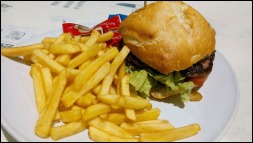 Slowly, over the years, as the numbers of vegan endurance and strength athletes increased, it became evident that to continue performing or competing at the highest level, they needed ensure they were getting sufficient quantities of protein in their diets. The shift toward more natural foods also helped as it highlighted minimally processed foods that are low on the food chain, and raised the awareness of nutritional content of foods. Because we live in a society of quick fixes and on-the-go eating, it didn't take long before some enterprising individuals and corporations figured out that there was an untapped market, and vegan started to go mainstream. Where the options used to be wholesome foods that took time to prepare, now, even big-box grocery stores (at least here in Southern California) carry a wide variety of vegan processed foods and there are even chains of vegan "burger" restaurants that serve up vegan versions of all the fast-food nightmares Even though highly processed, nutritionally stilted food options seem to be proliferating, many have come to realize that these foods aren't good for our health. The same is true for many of the vegan options available in the grocery stores and restaurants. Just because something is vegan doesn't mean it's good for you. For the sake of convenience, that vegan item could be highly processed, high in sugar, salt, and fat, or filled with chemically processed isolates. In reality, we need to reconsider the price of convenience. It is better for our bodies, our minds and our planet when we eat closer to nature, with some supplementation and an occasional "treat". This way we ensure both our nutritional and psychological needs are met.
So, what does that mean for protein? First, we need to have an understanding of how much protein is required. The USDA's Recommended Dietary Allowance says that relatively sedentary human adults need 0.36g of protein for each pound of bodyweight (0.8g per kilogram of bodyweight). However, the problem with this calculation is that it actually doesn't provide enough protein for relatively active to athletic adults. Considering that a 150 lb adult eating a 2000 calorie diet would only receive 53 grams of protein per day. At 4 calories per gram of protein, those 53 grams of protein equal 212 calories, or only about 10% of total daily calories. That's at the low end of the well publicised goal of 10-35% of daily calories from protein. Factor in an active or athletic adult who is burning an additional 1000 calories per day, and the percentage of calories from protein falls even lower. According to Nancy R Rodriguez from the Department of Nutritional Sciences at the University of Connecticut, Storrs, CT, (Am J Clin Nutr June 2015 vol. 101 no. 6 1317S-1319S) the average relatively sedentary individual should be targeting closer to 0.45g-0.68g of protein per pound of bodyweight (1g-1.5g per kilogram of bodyweight). Some studies have shown that this level of protein intake may result in reduced risk of chronic diseases, better weight management and body composition, adherence to a weight loss programs, and importantly, may slow or prevent the progression of sarcopenia (age-related muscle loss) in active older adults. With the argument made for additional protein consumption, the difficult part comes into focus. How do you get the added protein in your diet. For omnivores (people who eat animals, vegetables, fruits and dairy products.) it's pretty easy. But for vegans, unless you eat a lot of those highly processed foods, you'll have a much more difficult time. In the chart below I've listed out a wide variety of vegan protein sources and the number of grams of protein per 100g of the food. Eating more seeds, nuts, and beans is the most obvious choice, but that also has the side effect of getting higher amounts of fat and total calories. For example, while 100g of almonds provides just over 21g of protein, it also provides about 500 total calories. This is where I believe that supplementation comes in. There are a variety of high-quality vegan protein supplements available. While they're still highly processed in comparison to whole foods, many vegan protein powders avoid unhealthy chemically processed isolates, and high sugar contents. My personal favorites include Vega One All-in-One Nutritional Shake, Vega Sport Performance Protein Powder, and Garden of Life Raw Fit Protein Powder. If you're a vegan, I strongly suggest you research your protein needs and discuss protein supplementation with a registered dietitian. I have a network of vegan RDs that I can refer you to as well as provide you with further information. Feel free to contact me by clicking on the CONTACT button.  Does going to the gym sound boring to you? Does the idea of running on a treadmill make you want to stay home and watch TV? Guess what? You're not alone! One of the biggest reasons exercisers stop making progress in their weight loss or worse yet, stopped working out all together, is boredom. In fact, doing the same workout routine over and over, whether that's cardio or resistance training, is a surefire way to get bored and on top of that, it's a reliable way to STOP getting the results you want. Here's the problem. The body and mind have this incredible ability to adapt to new inputs very quickly. The gains that occur in the first few weeks of doing a workout are usually the result of neuromuscular adaptations. During this phase, your muscles and nerves are learning how to fire to efficiently perform the exercise and as a result you see a rapid change in your abilities. However, after several weeks, once your body has figured out what muscles and nerves need to fire, your progression slows down. Additionally, your mind figures out little ways to cheat...A little swing of the weight, or a twist of the elbow, or pushing with the stronger leg, etc., all serve to further slow down the progression. As your progression slows, so too does your enthusiasm. It's hard to keep motivated when the weight loss slows or stops or you can't lift heavier weights or improve your time on cardio activities. Then why do people repeat the same workout over and over expecting different results? Partly because we're creatures of habit. Partly because we liked seeing ourselves progress over time. (E.g. The first time you do a workout, you can lift 25 lbs. or run for 15 minutes. Then, over time, you add more weight or time and that feels good because you have evidence that you're progressing.) Partly because it is uncomfortable doing things that we're not good at or that we're not familiar with. And partly because we are uncertain how to change things up in a way that will get us the same level of results. So, what can you do about this? The answer is simple. Switch things up on a regular basis. Here at Proactive Evolution, we are constantly changing up the exercises that our clients do. Focusing on Metabolic Workouts with a wide variety of exercises that work the entire body, you will get the results you want. To learn how I can help you Proactively Evolve yourself, click on over to the "Contact" page and send me a message. Now is a great time to lose the boredom and lose the weight! 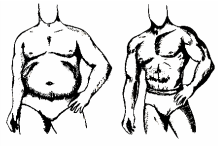 There's an old saying in the fitness community that has several variations and goes something like this: "You can't out lift your mouth" or "you can't outrun your mouth." The obvious meaning is that no matter how much you exercise, you won't get the body you want if you don't watch what goes in your mouth. There is a corollary to this statement that says no matter how much you diet, you're not going to get a fit, strong, powerful body if you don't workout. Even though this is seemingly common sense, it's amazing how many people attempt one without the other. (To be honest, in the past I've been one of these people!) To illustrate what this looks like, I'll give a few examples. 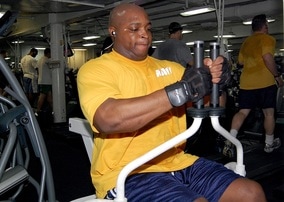 Go to any gym and you'll likely see a guy who is strong and moves heavy weights around like child's play, but, he has a big belly. He lifts weight regularly and he might even hit the treadmill or elliptical machine for a few minutes. He thinks, "If I just lift more weight, I'll get that six pack" and then he leaves the gym and grabs some fast food and a few beers to 'enjoy' while he watches TV for the night. He doesn't get the fact that the food he's eating and the otherwise sedentary lifestyle he leads are prohibiting him from seeing all the muscles that are swathed in layers of adipose tissue.  The alternative--those who constantly diet but do not do any resistance training--are just as common (although more often they're women than men.) In fact, pick up any fashion magazine or look at the majority of advertisements that feature women, and you're likely to see someone who is extremely thin, with stick-arms and stick-legs. These people, who embody what our society thinks of as "thin and beautiful," are likely to be eating lettuce with lemon juice for breakfast, lunch and dinner and probably doing lots of cardio in between. You'd think that because they are thin that they are fit healthy. But, just like the fat strong guy, the thin weakling isn't any better off.  The ideal that we should be striving for is "Lean and Powerful". Both men and women need to be lifting weights, progressively adding resistance so that we can build our strength. And, we need to be watching what we put in our mouths so that 95% of the time, we're eating lean, clean and green. If you need help with the tools and techniques to take charge of your life and build a Lean & Powerful body, click on over to the "Contact" page and send me a message. Now is a great time to start! 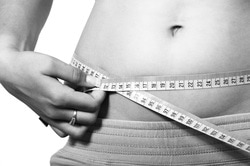 Wouldn't it be wonderful if the moment we make the decision to lose weight that we were already in prime fitness. We could start an Olympic level workout program and in just a very short time the scale would show us exactly what we want to see. Unfortunately, we all know reality doesn't work that way. When I started my lifestyle transformation, I quickly realized that being 100 lbs overweight meant that it was going to take me quite a while to get to a healthy weight. I also knew that it was going to take quite a bit of effort and that there wasn't going to be anyone doing it for me. I had to take responsibility for myself and I had to take responsibility for having allowed myself to gain all that weight. But, taking responsibility isn't a punishment, it's actually a privilege. Rather than allow my inner critic to berate me and scold me for where I was, I set my sights on where I wanted to be. I am so grateful that I took the opportunity to change my life. If you need help with the tools and techniques to take charge of your life, click on over to the "Contact" page and send me a message. |
Personal Trainer, Health Coach, Skydiver, Mountain Biker, Road Cyclist, Vegan, Medical Device Systems Engineer. |
|||||||||||||||
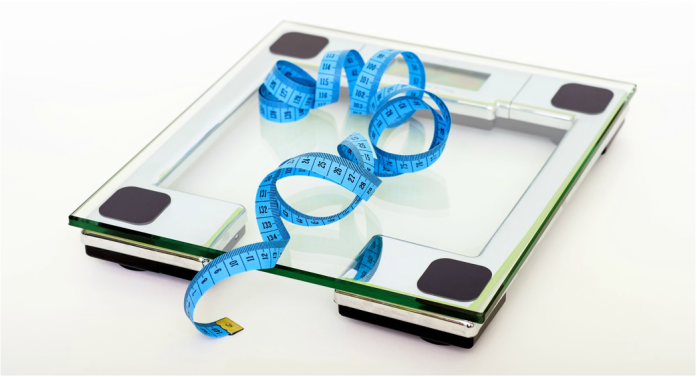
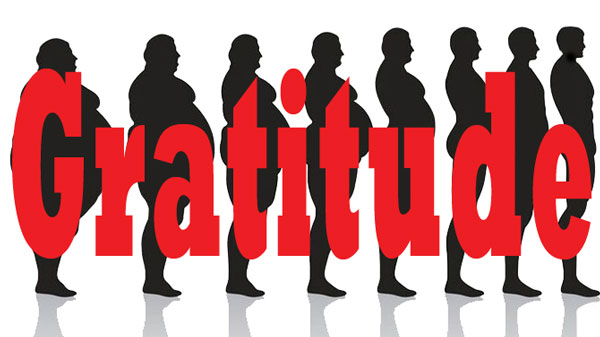
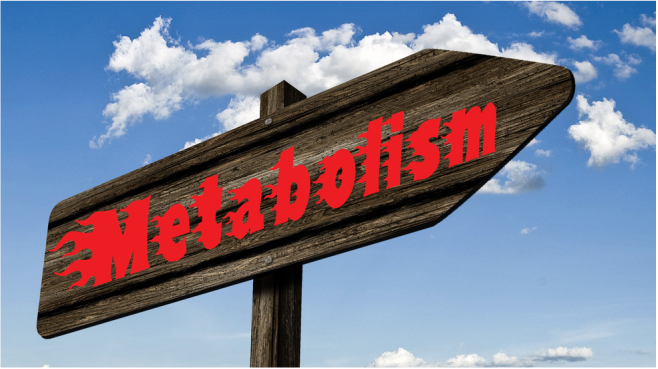
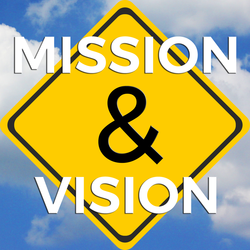
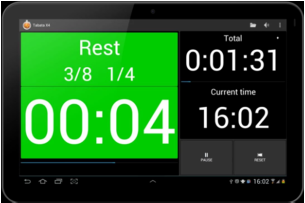
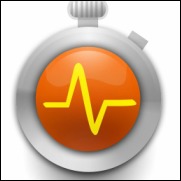


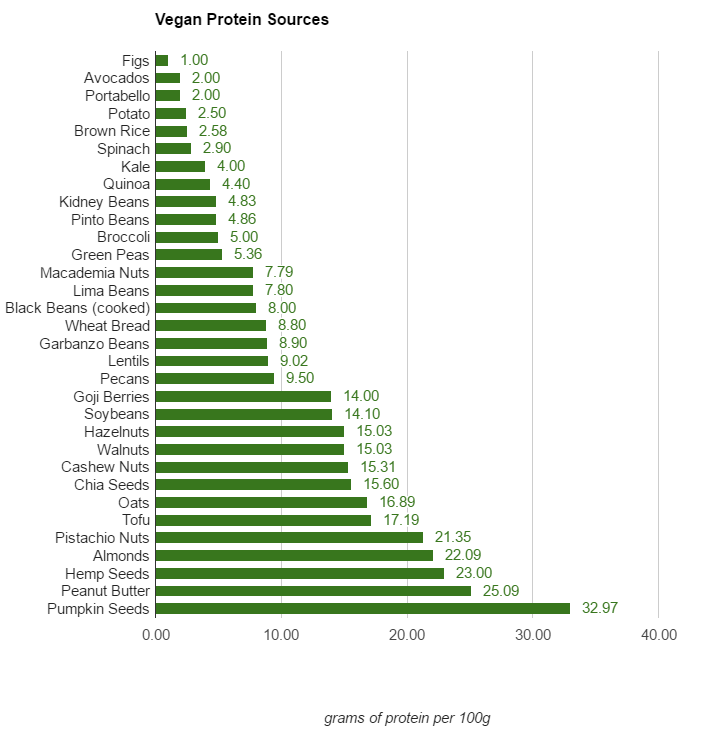
 RSS Feed
RSS Feed